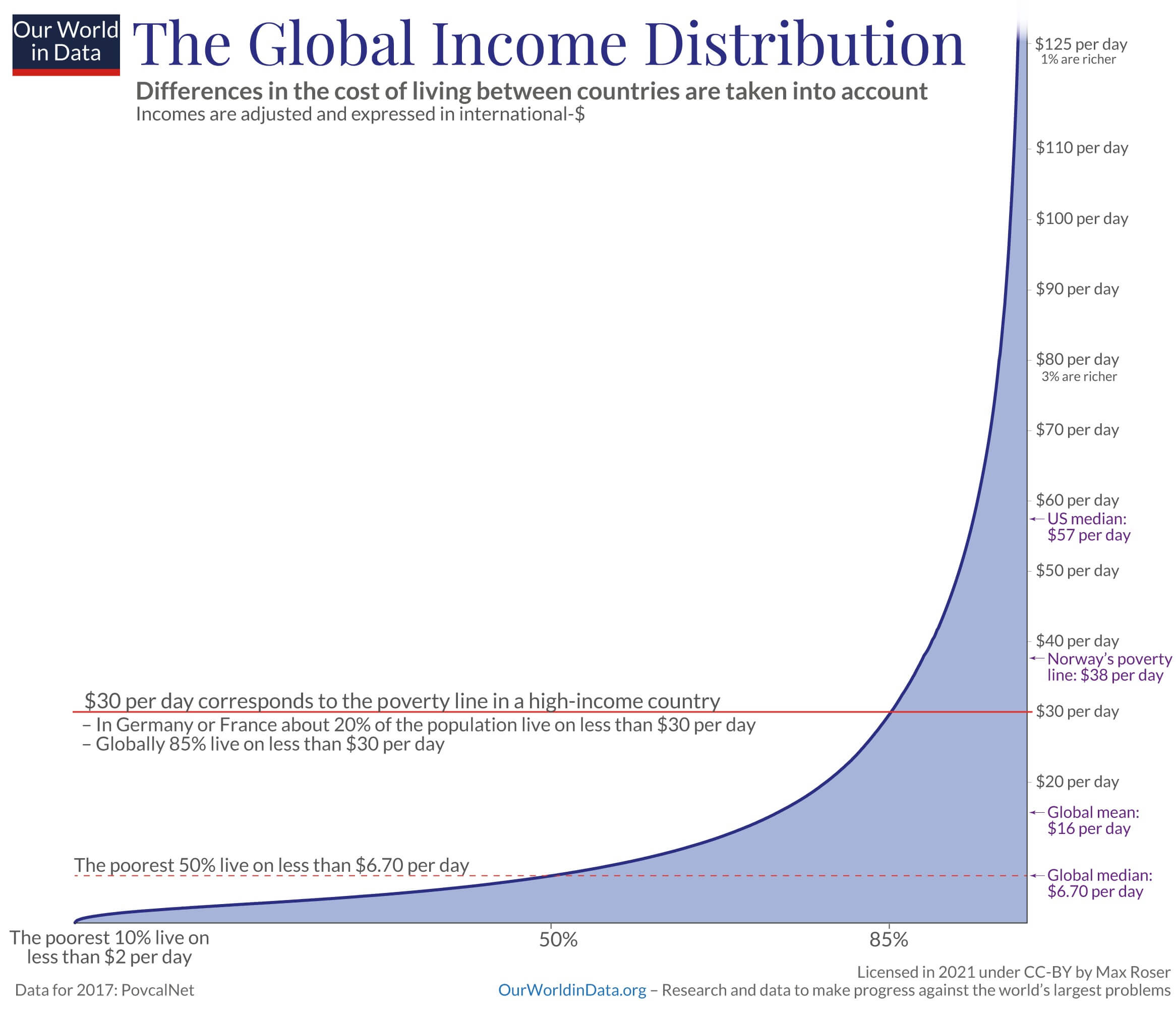What Is Global Health and Development?
@tags:: #lit✍/📰️article/highlights
@links:: cause profile, global health and development,
@ref:: What Is Global Health and Development?
@author:: Probably Good
=this.file.name

Reference
=this.ref
Notes
(highlight:: This graph from Our World in Data shows the extent of global income inequality.
 )
)
- View Highlight
-
Despite impressive progress in recent decades, much of the world’s population remains very poor, with around one in ten living on less than $1.90 a day – the threshold for extreme poverty. This is even worse than it might sound: it’s adjusted for how much $1.90 would buy you in the United States, rather than in low- and middle income countries where most of the global poor live.
- View Highlight
-
Most donors (and volunteers, etc.) prefer to help those closer to them, leading to only 6% of donations going to international charities. Since the vast majority of wealthy donors live in high-income countries, most of that money stays at home — and so rich countries (and cities, and neighborhoods) have vastly more resources than poorer ones. For example, the country of Niger loses 750 times more healthy years of life to disease than Silicon Valley every year, yet Silicon Valley residents receive about 5 times as many donations for health-related causes. This means that someone in Silicon Valley would receive more than 3,500 times more donations for every year of healthy life lost relative to someone in Niger.
- View Highlight
-
dg-publish: true
created: 2024-07-01
modified: 2024-07-01
title: What Is Global Health and Development?
source: reader
@tags:: #lit✍/📰️article/highlights
@links:: cause profile, global health and development,
@ref:: What Is Global Health and Development?
@author:: Probably Good
=this.file.name

Reference
=this.ref
Notes
(highlight:: This graph from Our World in Data shows the extent of global income inequality.
 )
)
- View Highlight
-
Despite impressive progress in recent decades, much of the world’s population remains very poor, with around one in ten living on less than $1.90 a day – the threshold for extreme poverty. This is even worse than it might sound: it’s adjusted for how much $1.90 would buy you in the United States, rather than in low- and middle income countries where most of the global poor live.
- View Highlight
-
Most donors (and volunteers, etc.) prefer to help those closer to them, leading to only 6% of donations going to international charities. Since the vast majority of wealthy donors live in high-income countries, most of that money stays at home — and so rich countries (and cities, and neighborhoods) have vastly more resources than poorer ones. For example, the country of Niger loses 750 times more healthy years of life to disease than Silicon Valley every year, yet Silicon Valley residents receive about 5 times as many donations for health-related causes. This means that someone in Silicon Valley would receive more than 3,500 times more donations for every year of healthy life lost relative to someone in Niger.
- View Highlight
-